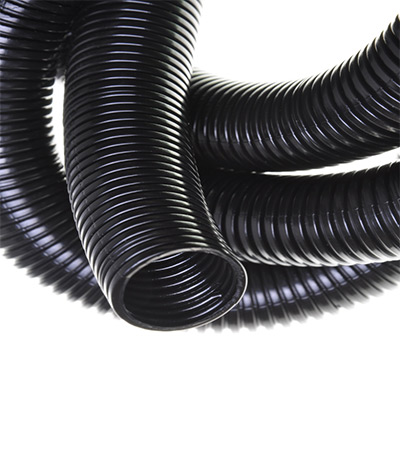Graphene nanotubes prevent static electricity buildup in TPU hoses.

In various industries with special operating conditions, when dry bulk materials are conveyed by compressed air through a nonconductive hose, there is a risk of the accumulation of electrical charge due to friction. This can lead to sparks, resulting in damage to electronic components, or even fire or explosion. To prevent static electricity buildup and arc discharge, conductive material enhanced with metal wire is used as the key component for the manufacture of this type of conveying hose. Use of traditional conductive agents like carbon black requires high concentrations, which results in detrimental effects on the mechanical properties of the final product, including reduced flexibility.
“Replacement of a standard compound with TPU modified with graphene nanotubes results in stable, homogeneous conductivity of the final hoses, without compromising their strength or flexibility. By adding only 0.4–0.5 wt% of graphene nanotubes, our client was able to obtain thermoplastic polyurethane with resistance of the order of 106 ohm/sq, allowing the hoses to meet the typical requirements of industrial norms related to electrostatic risks. Additionally, graphene nanotubes’ low working dosages make it possible to maintain the abrasion and chemical resistance, flexibility, and non-marking properties of TPU,” said Dr. Christian Maus, development and support leader for thermoplastics, OCSiAl Group.
The nanotube-modified hoses perfectly meet the demands of heavy-duty operating applications, which frequently require a combination of ESD protection and high abrasion resistance and durability. Based on their excellent performance, these industrial TPU hoses can be widely used in pneumatic and aspiration systems for pumping or transporting materials with high abrasive properties, including abrasive powders, sawdust, chopped paper, construction waste, petroleum products, and crushed or granular materials.
In this episode, I sat down with Beejan Giga, Director | Partner and Caleb Emerson, Senior Results Manager at Carpedia International. We discussed the insights behind their recent Industry Today article, “Thinking Three Moves Ahead” and together we explored how manufacturers can plan more strategically, align with their suppliers, and build the operational discipline needed to support intentional, sustainable growth. It was a conversation packed with practical perspectives on navigating a fast-changing industry landscape.